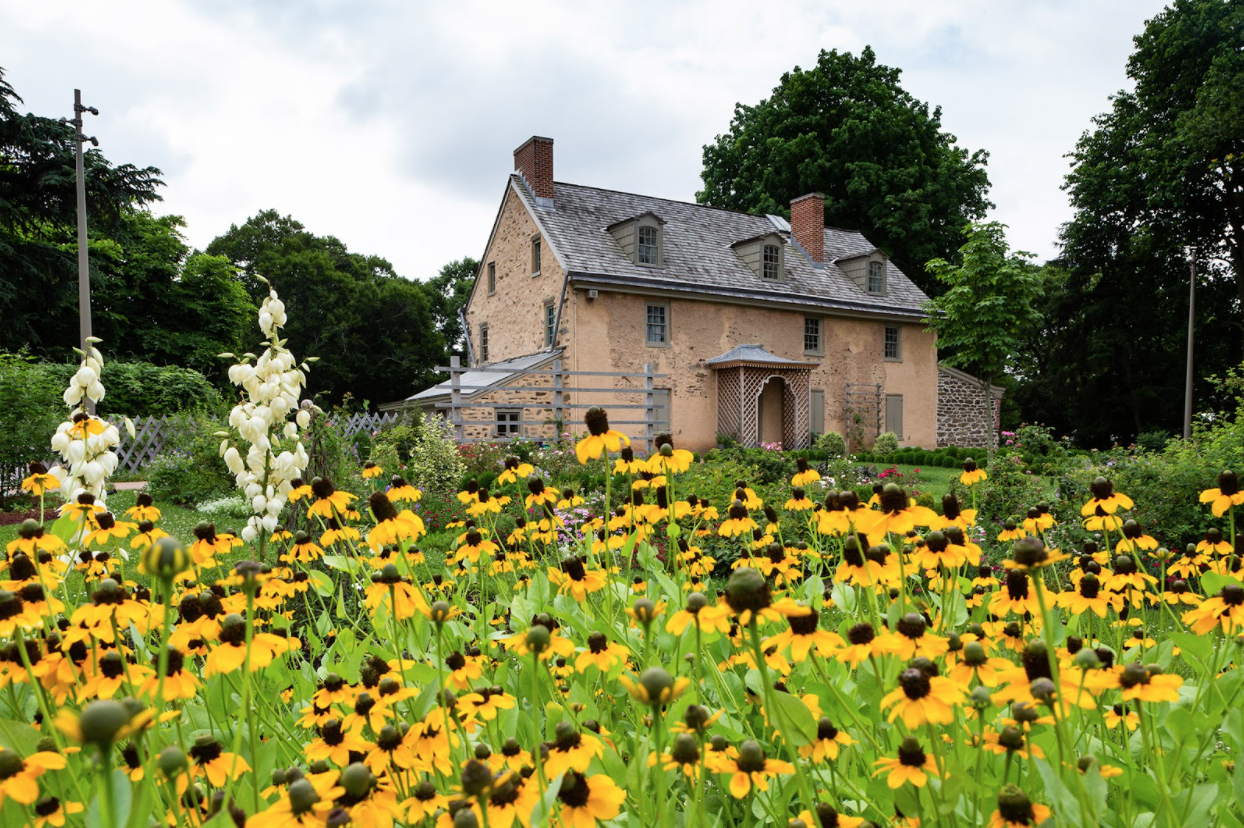Bartram and Influence on American Gardening
As published in Table Magazine, May, 2021
House of John Bartram, the colonial botanist and agriculturist, near Philadelphia. Courtesy New York Public Library.
The man who would eventually be described by Carl Linnaeus as the "greatest natural botanist in the world” began his lifelong study of plants for a surprising reason: John Bartram had dreamed of becoming a doctor, but he was born in Pennsylvania in 1699, where the first medical school (the College of Philadelphia) wouldn’t be established until 1765. With a passion for science and acres of unspoiled wilderness around him, he followed his curiosity and became an expert on North American plants, transforming the culture of gardening on both sides of the Atlantic in the process.
If you’ve heard the name “Bartram,” it might be because you know that there’s a lush oasis on the Schuylkill River called Bartram’s Garden, where a dedicated staff of botanists and curators tend to John Bartram’s historic estate. School groups and visitors can enjoy adventures in urban vegetable gardening and enjoy its flowering plants and trees year round. Born in colonial Darby, Pennsylvania, John Bartram was the grandson of Quaker settlers from England. He purchased the tract of land where his home still stands in 1728, and made it his home base for his vast collection of North American plants and his successful seed and nursery business.
William Bartram drawing/James Trenchard engraving: “Bignonia Bracteata. Journ. page.” or Georgia bark (Pinckneya bracteata). Engraving by James Trenchard, possibly for 1786 (Story) edition of “Travels.”
APS-B. S. Barton Collection Hallock & Hoffmann, p. 295
His lifelong interest in medicine and medicinal plants inspired him to seek out species across the continent, and he set out on numerous excursions: west to Lake Ontario, north to New England, and as far south as Florida. He collected plants and seeds everywhere he went. On one trip, John and his son William found a species of plant they would call the Franklinia alatamaha in honor of John’s friend Benjamin Franklin, with whom he would co-found the American Philosophical Society in 1743.
John Bartram House & Garden, 54th Street & Lindbergh Boulevard, Philadelphia, Philadelphia County, PA Photos from Survey HALS PA-1.
According to Mandy Katz, Lead Gardener at Bartram’s Garden, John’s journeys of discovery led him to learn about North American plants from the Native people who lived here. “Native Americans knew these plants well and had relationships with them long before John Bartram’s family arrived in North America from England. He learned a great deal both directly and indirectly about the plants from the continent’s Native inhabitants, including their medicinal uses,” she says.
John and his sons John Jr. and William would become renowned for sending shipments of live specimen plants to eager garden aficionados in England. Arriving in January or February right before planting season, they were known as “Bartam’s boxes.” They were constructed from wood, with tender plants packed inside with sand or moss. They might contain North American specimens like mountain laurels, orchids, rhododendrons, or magnolia—all considered exotic status symbols in 18th century England. Bartram and his sons are also credited with producing the first plant catalog in America, a large sheet of paper listing over 200 “trees, shrubs, and herbaceous plants.”
Not to be outdone by Benjamin Franklin, Thomas Jefferson ordered seeds from the Bartrams when he was designing the gardens at Monticello. George Washington was also a Bartram client. “Bartram’s boxes” were mentioned in London publications as early as the 1750s, and by 1765, King George III named Bartram his “Royal Botanist.” Three generations of Bartrams ran the seedling business, and would ultimately build ten greenhouses on the property, propagating over 4,000 varieties of plants. Bartram’s son William traveled through the American south for nearly four years, drawing the plants he found, and eventually publishing “Travels Through North & South Carolina, Georgia, East & West Florida” in 1791—a book that would later inspire John James Audubon.
John Bartram House & Garden, 54th Street & Lindbergh Boulevard, Philadelphia, Philadelphia County, PA Photos from Survey HALS PA-1.
Did Bartram have a particular style or gardening aesthetic? Only to the extent that he propagated plants that he found interesting, worrying about geometry and layout only as it concerned plant health. According to Nicole Juday Rhoads, Director of Audience Engagement at the Pennsylvania Horticultural Society, we actually have John Bartram to thank for unmaking the rigid, formal style of European gardens that had flourished in 17th and 18th century France, which had in turn influenced English gardens. “Before John Bartram American landscape and garden design, to the degree it existed, was derivative of the English landscape,” she says. “Bartram was the first person to export North American flora to Europe, where these plants were considered extremely desirable and highly collectible by connoisseurs. In doing so he moved American horticulture beyond just emulating the English style and laid the foundation for an increasingly independent gardening movement celebrating the incredible diversity of American plants.” This meant less formality, a touch more wildness, and a general willingness to experiment and play.
A drawing by William Bartram showing specimen plants in Williamsburg, VA, [Williamsburg, Virginia, ca. 1740]. Courtesy Library of Congress
By the late 19th century, however, after over a hundred years of successful cultivation, Bartram’s Garden had become a true mess rather than an eccentric idyll. Overgrown and neglected, it was situated in what was now one of Philadelphia's major industrial areas, and it was in desperate need of conservation. This came in the form of a man named Thomas Meehan who had once worked as a gardener on the estate, and by 1891 was a member of Philadelphia’s City Council. Thanks to his campaign, that year the grounds became part of the city’s park system, and in 1963, the house became a National Historic Landmark. Today, Bartram’s Garden is a thriving educational and cultural treasure where, happily, a sense of curiosity and wonder is in full bloom.





